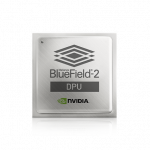A Data Processing Unit (DPU) is a programmable computer processor that tightly integrates a general-purpose CPU with network interface hardware.
In VMware, starting with vSphere 8.0, DPU can be used to offload workloads from an x86 host to a DPU, as well as providing an additional layer of security by having an air-gapped environment running some of the processes. This is the result of Project Monterey.
vSphere Distributed Services Engine® is the core vSphere capability that enables customers to use DPUs with vSphere and VMware Cloud Foundation.
Actually only few DPU are in the VMware HCL:
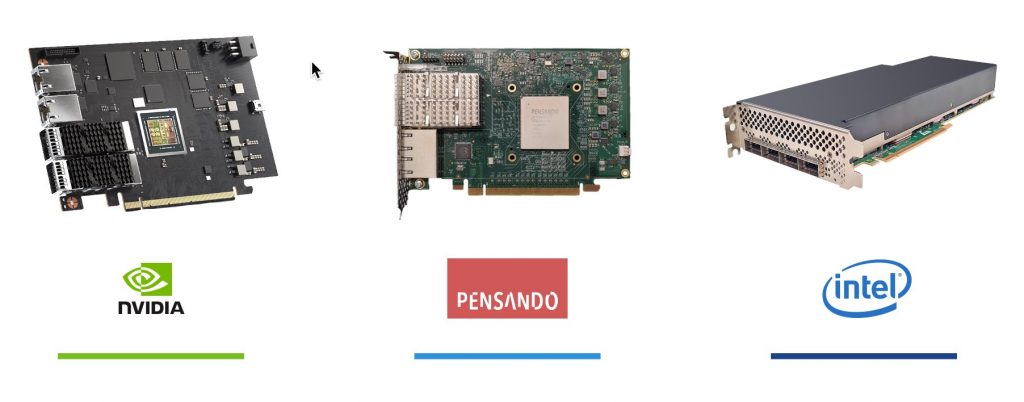
With vSphere Distributed Services Engine, infrastructure services are distributed across the different compute resources available on the ESXi host, with networking functions offloaded to the DPU.
Note that vSphere Distributed Services Engine does not require a separate ESXi license. An internal network that is isolated from other networks, connects the DPUs with ESXi hosts. ESXi 8.0 server builds are unified images, which contain both x86 and DPU content. In your vSphere system, you see DPUs as new objects during installation and upgrade, and in networking, storage, and host profile workflows.
With vSphere Distributed Services Engine, you can:
- Install and update ESXi images simultaneously on the x86 server and the attached supported DPU to reduce operational overhead of DPU lifecycle management with integrated vSphere workflows. For more information, see Using vSphere Lifecycle Manager With VMware vSphere Distributed Services Engine.
- Set alarms for DPU hardware alerts and monitor performance metrics on core, memory, and network throughput from the familiar vCenter interfaces, without the need of new tools. For more information, see CPU (DPU) and Memory (DPU).
- Accelerate vSphere Distributed Switch on the DPU to improve network performance and utilize available CPU cycles to achieve higher workload consolidation per ESXi host. For more information, see What is Network Offloads Capability and Create a vSphere Distributed Switch.
- Get vSphere DRS and vSphere vMotion support for VMs running on hosts with DPUs attached to get the benefits of passthrough without sacrificing on VM portability. For more information, see Homogenous clusters for DPUs.
- Improve the security of infrastructure with zero-trust security. For more information, see vSphere Distributed Services Engine Security Best Practices.
But with VMware vSphere 8.0.3 now is possible support two DPU on the same host, in two different scenarios:
- High availability DPU configutration: in a active/standy configuration to improve distribuited virtual switches resiliency:
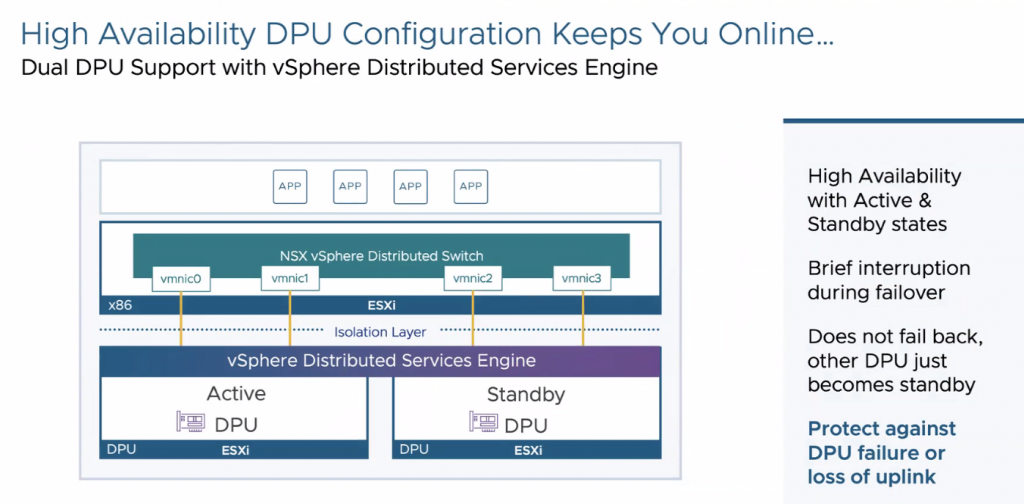
- or in active-active configuration to increase network offload capacity but without card resiliency:
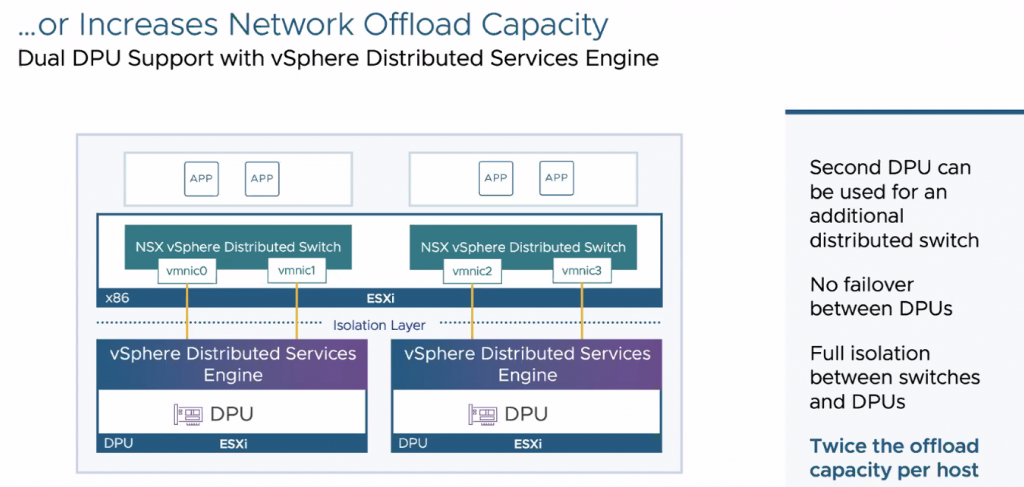
Of course, is possible manage the lifecycle of both DPU, using the same tool used before: vSphere Lifecycle Manager.
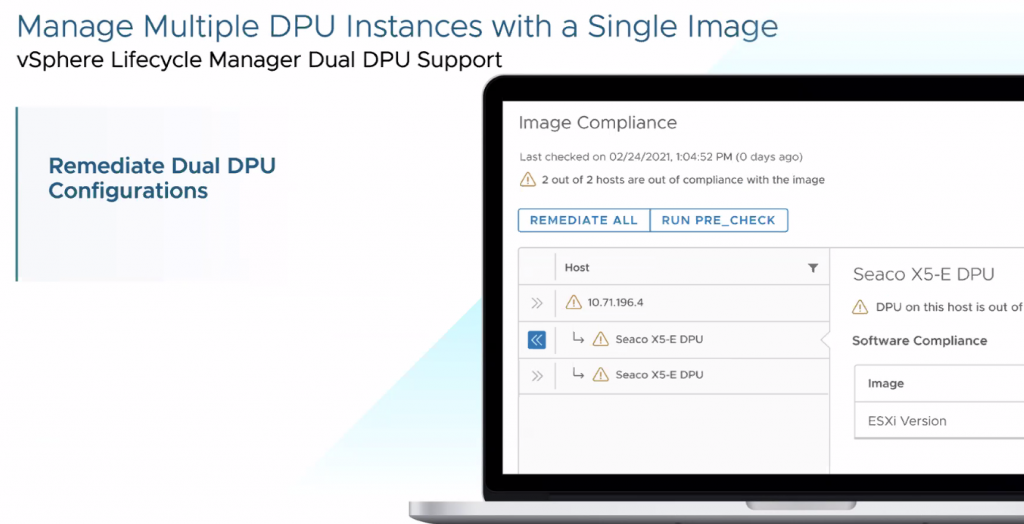
For more informations see also:











